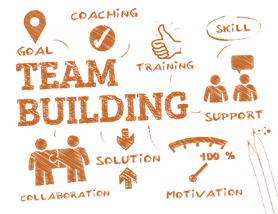On-line training for women e-entrepreneurs
-
Module 1 What is entrepreneurship8 Topics|1 Quiz
-
1.1. Introduction to entrepreneurship
-
1.2. Basic principles of entrepreneurship
-
1.3. Types of entrepreneurship
-
1.4. Differences between entrepreneurship and e-entrepreneurship
-
1.5. Entrepreneurial thinking
-
1.6. Entrepreneurial skills
-
1.7. Challenges and opportunities women face in entrepreneurship
-
1.8. Ethical aspects in entrepreneurship
-
1.1. Introduction to entrepreneurship
-
Module 2 From idea to business7 Topics|1 Quiz
-
Module 3 Digital Marketing10 Topics|1 Quiz
-
3.1 Marketing research and marketing plan
-
3.2 Digital Marketing
-
3.3 S.E.O. (Search Engine Optimization)
-
3.4 Social media marketing
-
3.5 PPC – Google AdWords
-
3.6 Web Analytics
-
3.7 Mail Marketing
-
3.8 Internet of Everything
-
3.9 How to build your website
-
3.10 Effectiveness of a digital marketing strategy
-
3.1 Marketing research and marketing plan
-
Module 4 Business Networking6 Topics|1 Quiz
-
Module 5 Fund-raising & financing6 Topics
-
Module 6 Presentation of an e-entrepreneurial project (pitch)3 Topics|1 Quiz
-
Annex
2.6 Team building

Knowing how to work together is a fundamental requirement for any sector and company size. But it’s not an innate ability, or at least not for everyone. The delicate work balances are often compromised by factors such as stress, inexperience, lack of motivation, or an excess of zeal from the desire to show off and so on. Companies that base their activities on working groups use the team building technique:
- to develop the same orientation in the persons involved in the same project, activity or job
- to create collaboration, communication, cohesion, sharing of objectives
- to increase even those personal links, that more than any other contribute to the success of the team.

The “team building” is an activity that aims to form a group of people. In particular, in the business environment, the goal is to obtain the maximum in terms of performance from your employees.
Team building can be of a training type if it is associated with some specific needs deriving from a detailed analysis, or it can simply be of a playful type, if the goal is to entertain the group and develop a feeling of belonging to a team.
Entertainment activities can be linked to sport, theatre, music, adventure, but always flexible and articulated. The primary purpose is one and only: to make the group feel like a real team; for this you must go beyond mere superficial knowledge, given by collaboration in the office, and you have to allow group members to increase trust in each other, improve the level of collaboration, stimulate creativity, encourage communication, recognize each other’s moments of tension and individual capacities for action and reaction.
Often “team building” is confused with “teamwork”, but in reality there is a subtle difference: in teamwork, individuals are already part of a pre-established group and the aim of the event is to make them work in a more synergistic way between them.
In team building, on the other hand, the aim is to create a group or to help leaders to manage and improve behaviors and dynamics that aggregate and make their group more effective, also learning to be a good coach – one who knows how to develop motivation of each collaborator.
The individual skills that a member of a team should have or, through team building, develop and enhance are:
- active listening: or showing interest in the communication that comes from one’s interlocutor;
- understanding: that is, having the ability to “put oneself in someone else’s shoes” to better understand her reactions in a certain context and perhaps discover that her own behavior would have been identical;
- show sincere interest: making oneself transparent in one’s perception of the other helps in constructive criticism, to make the other feel sincerely accepted, it helps her/him to receive them as a demonstration of affection;
- attention to little things: relationships are based above all on minimal demonstrations such as a kind phrase said at the right time or a banal thank you for a job;
- consistency: having the ability to do what you claim is important to be taken seriously and to be respected;
- availability: the attitude of discerning when to do something independently and when to say “no” to constant requests for work simply because someone wants to take advantage;
- ability to recognize one’s mistakes and apologize: in this case the other will feel the ability to self-criticize and will increase her/his esteem in the colleague who knows how to repair the damage done;
- actively contribute: it means offering one’s own contribution for the growth of others. Developing knowledge and skills is not profitable if you do not have the ability to pass them on to others.
For the group to be effective in pursuing its objectives and therefore to be considered at company level as performing it should have the following characteristics:
- clear roles and objectives: each member knows perfectly and without ambiguity what she/he is called to do and what she/he is responsible for;
- good communication flow: communication must be constant and multi-directional so that problems emerge immediately as well as solutions;
- trust in the group: having the certainty that the other elements of the group are present, available and that everyone is cohesive;
- alignment: that is, everyone knows the goal to be achieved and shares the “vision” of the working group;
- excellence: everyone is striving for victory. The result is determination and contribution to give the best of themselves.
A short video on Team building


